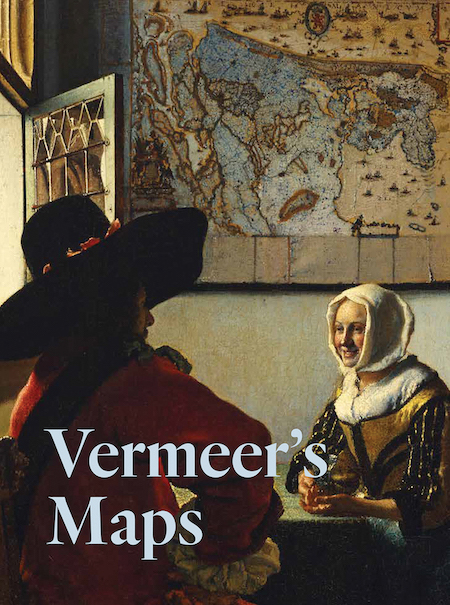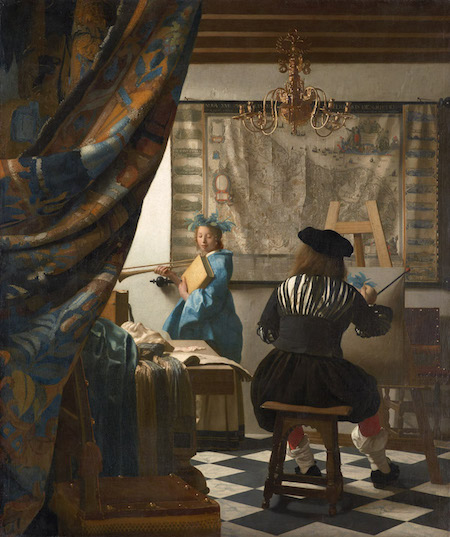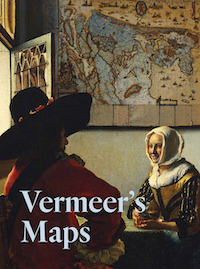
NEW YORK – With stunning reproductions and incisive text, Vermeer’s Maps (Delmonico Books / The Frick Collection, $39.95), a 128-page hardcover released on October 11, is the most comprehensive study of the artist’s depiction of wall maps to date. Drawing on rare surviving examples of the maps and other primary sources, author Rozemarijn Landsman examines this intriguing aspect of Vermeer’s work, greatly enriching and expanding our understanding of the art and life of the man dubbed the “Sphinx of Delft.”
People have been captivated by the work of Johannes Vermeer (1632-1675) since the 19th-century rediscovery of the Dutch painter. Maps, an intricate fusion of art and science, held an important and multi-faceted place in the Netherlands in the 17th century and were of particular interest to Vermeer. Of the approximately 34 paintings attributed to the Delft-based artist, wall maps and other cartographic objects are depicted in nine of them, including the renowned Officer and Laughing Girl and his masterpiece, The Art of Painting.

Johannes Vermeer was born in Delft in 1632. Few known documents record his early life and none describe his artistic training, which has been the subject of much speculation. Vermeer’s work commanded high prices during his lifetime, yet the expenses of his large family, his unsold inventory as a painter and art dealer, and the Dutch economic downturn of the 1670s appear to have depleted his resources to the extent that he died in debt at the age of 43. Today, only 34 paintings are generally accepted to be by Vermeer’s hand, of which three are in the Frick Collection.

“While scholars continue to remark on the prominence of maps in Vermeer’s art, these objects are rarely the center of attention. […] Questions about the maps in Vermeer’s paintings linger: What kinds of maps are they? How were they made? For whom were they produced? What were their functions? Above all, the questions of what maps meant for Vermeer and his art and what may have motivated him to choose these specific objects to adorn his painted walls remain to be addressed.” —Rozemarijn Landsman
Rozemarijn Landsman is the 2019-21 Anne L. Poulet Curatorial Fellow at the Frick Collection. She is a Doctoral Candidate at Columbia University.


